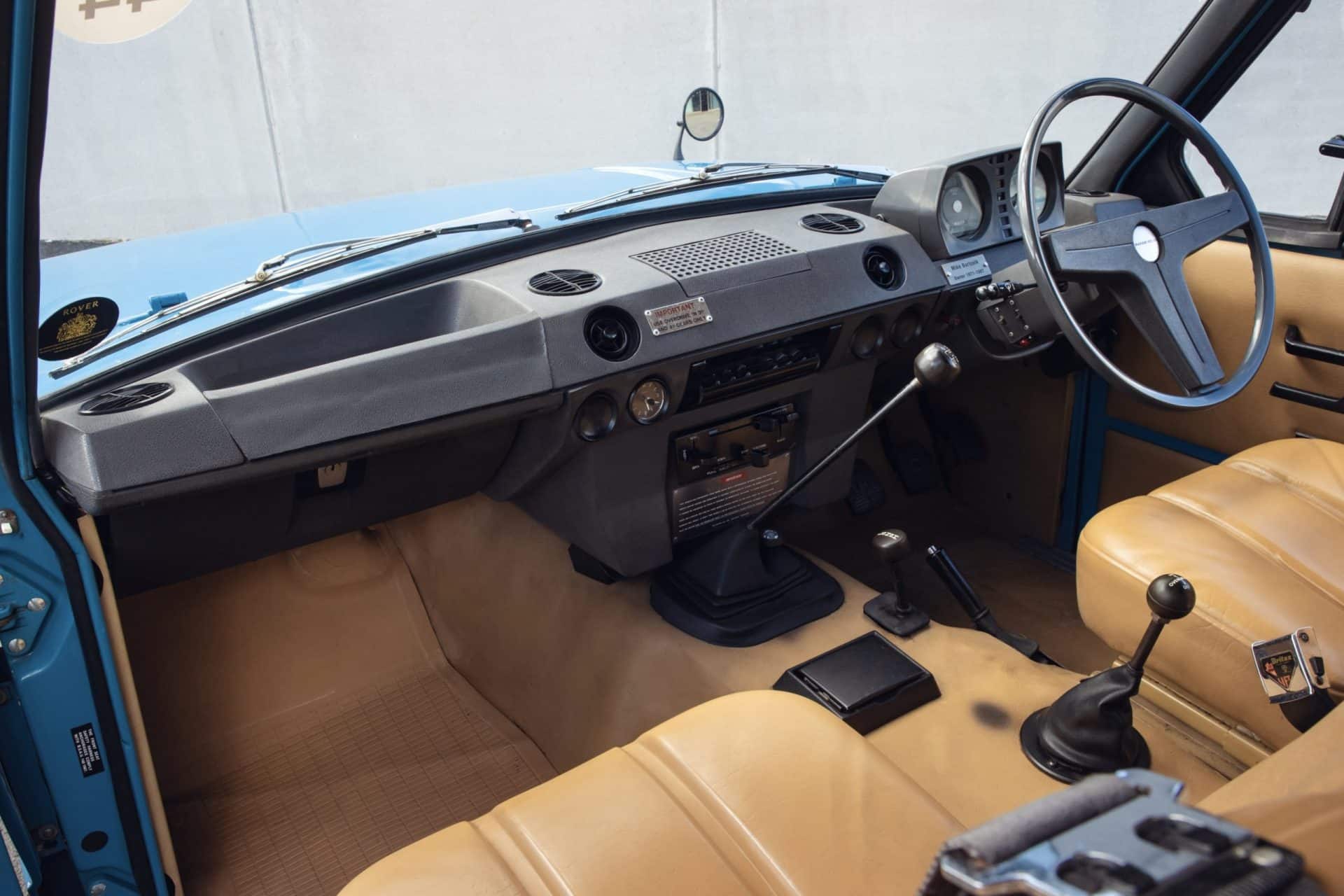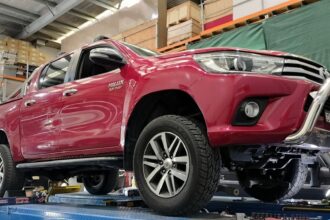We’re a day late with this one but we can’t let the fact the first Range Rover rolled off the production line 50 years ago yesterday go by without a mention.
The Range Rover turns 50 and the team at Unsealed 4X4 missed it… by a day! That’s right, one of the most influential 4x4s of all time first rolled off the Land Rover Solihull production line 50 years ago yesterday, on 17 June 1970.
From the beginning, the Range Rover was designed to be as good on the road as off it, back in a time when four-wheel drive vehicles offered little in the way of on-road refinement and performance due to their narrow off-road focus.
The first Range Rover was never designed to be the luxury vehicle that today’s Range Rover is, but rather a premium leisure vehicle in the same vein as vehicles in the US like the Ford Bronco and Jeep Wagoneer. The Range Rover was the idea of the Rover car company’s engineering chief for new vehicle projects, Charles Spencer ‘Spen’ King , who was the nephew of the founders of Land Rover, and he hatched a plan to combine the comfort and on-road ability of a Rover passenger car with the off-road ability of… you guessed it, a Land Rover.

From the get-go, the Range Rover featured a separate chassis and live axles front and rear, as all Land Rovers did up until that point, but instead of leaf springs it ran long-travel coil springs that would not only provide a more compliant ride but also superior axle articulation for better off-road performance. In fact, when the first prototypes were tested, their off-road capability astounded the Land Rover engineers.
To ensure it offered strong on-road performance, the Range Rover was powered by a Buick-sourced 3.5-litre petrol V8 engine with a Zenith-Stromberg carburettor, as the Rochester carby used by Buick was not able to cope with steep off-road angles.
By today’s standards, the original Range Rover was quite rudimentary, with a four-speed manual gearbox and vinyl floor covering, but it had some innovative features including a full-time 4×4 system with a lockable centre differential. The Range Rover proved to be a Jack of all trades: capable off-road, comfortable on road, a good load carrier and an effective towing vehicle.

Over the years, the Range Rover has remained a technology pioneer; it was the first 4×4 to be fitted with ABS, the world’s first 4×4 to be fitted with electronic traction control (ETC) and automatic electronic air suspension, and, in 2012, the world’s first 4×4 to feature an all-aluminium monocoque construction.
Off the road, the Range Rover became the first vehicle to cross the supposedly “impassable” Darién Gap, and it won the Paris-Dakar Rally twice. It was also the first vehicle to be displayed in the Louvre Museum in Paris.
To celebrate 50 years of Range Rover, Land Rover has released a limited-edition Range Rover Fifty, of which there are just 1970 units worldwide. Based on the on the luxuriously appointed Range Rover Autobiography, the Range Rover Fifty features a number of bespoke exterior accents in Auric Atlas as well as two unique 22-inch wheel designs. The badging features a ‘Fifty’ script created by Land Rover’s Chief Creative Officer, Gerry McGovern, which appear on the exterior of the vehicle and throughout the interior. In Australia, the Range Rover Fifty will be available in standard wheelbase configuration and powered by a 386kW 5.0 Supercharged V8.
When it launched in Australia in 1972, the Range Rover cost $7700. Today, a Range Rover Autobiography can cost upwards of $307,000! Times certainly have changed.

Range Rover World Firsts
1971 Range Rover becomes the first vehicle to be displayed at the Louvre museum in Paris
1972 The Range Rover is the first vehicle to cross the Darién Gap
1979 A specially modified Range Rover wins the inaugural Paris-Dakar rally
1985 Diesel-powered Range Rover ‘Bullet’ breaks 27 speed records
1989 Range Rover is the world’s first 4×4 to be fitted with ABS anti-lock brakes
1992 Range Rover is the world’s first 4×4 to be fitted with electronic traction control (ETC)
1992 Range Rover is the world’s first 4×4 to be fitted with automatic electronic air
suspension
2009 Range Rover debuts Adaptive Dynamics system to continually optimise body & ride control
2012 Fourth-generation Range Rover is world’s first all-aluminium SUV
2014 All-Terrain Progress Control (ATPC) debuts on Range Rover and Range Rover Sport









